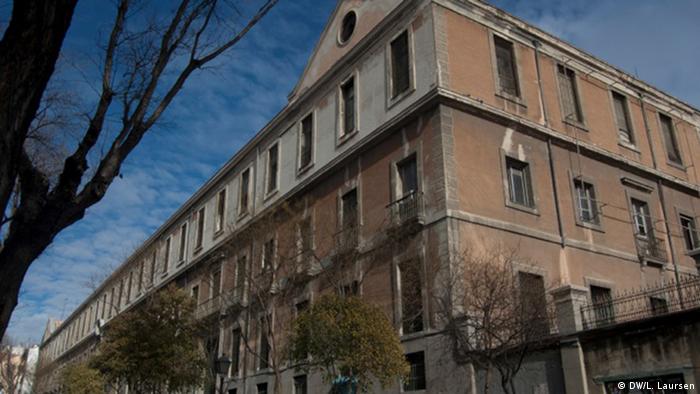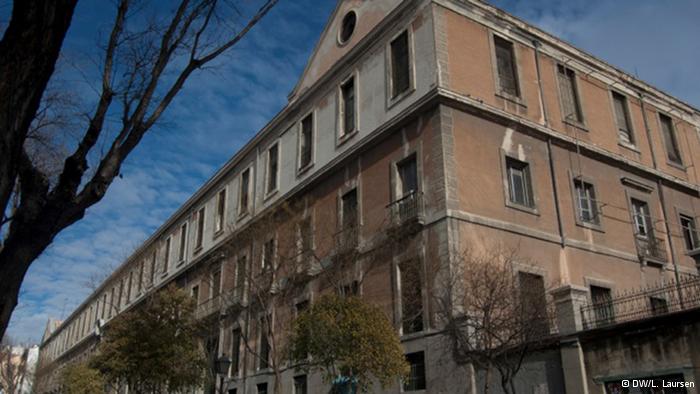First published in Deutsche Welle’s Pulse show: [mp3] [html]
If you visit the Tabacalera, a decrepit old tobacco factory in the center of Madrid, you might find artists painting in one basement room, hear muffled drums thumping from another, or catch a teenage video DJ performing in the courtyard next to the bike workshop.
There’s no tobacco processing done here anymore. And nobody charges at the door. In fact, it looks, sounds and feels like an anarchic arts squat. Until you bump into a security guard.
Otherwise, the Tabacalera is like many abandoned buildings occupied by Madrid’s politically active social groups. Those buildings often have street art on their interiors and host boisterous meetings. Banners on their balconies proclaim the politics of the squatters inside.
The Tabacalera has a lot of those things, but thanks to a contract with its owner, Spain’s Ministry of Culture, the building also has running water, working electricity, and salaried security guards. In return, nobody sleeps in the building and citizens do the curating and manage the building.
The subsidized squat
“These social centers are public, non-commercial spaces,” Miguel Martinez, a sociologist at the Complutense University in Madrid, told DW. “They are buildings with a multi-purpose aim, where collectives, groups, bands, artists, and individuals can gather and develop their activities. These are organized by assemblies.”
The defining factor, added Martinez, is the communal nature of the facility: “Everything must be free, everything must be shared, and everything is self-managed by the assembly.”

Everything, that is, except the utilities, the rent, and the security. It’s a kind of subsidized squat. However, according to Martinez, the government presence does not have an impact on the kind of art that participants create.
“I think people feel free to perform the music, the painting, their concert, whatever,” he said.
There is a lot of music at the Tabacalera, even when the main event is something else. At the Rave Market, Tabacalera regulars set up their own stands and sell used goods while a DJ spins tunes in the background.
Mario Serrano, who is unemployed, sells shirts, but is also a kind of all-rounder. “I come to Tabacalera to help my friends fix their skateboards, I give them a hand, take care of the Tabacalera a bit, and above all, when there’s a Rave Market, I come here with my friends,” he said, referring to the bazaar that takes place sometimes.
Flexible, not ideological
The Tabacalera, which opened as a tobacco factory in 1792, occupies a whole city block. The part managed by the squat is almost a third of that. “In the Tabacalera there are always more people, there are always more young people and, well, there are more sales,” Serrano said.
Mio Garcia says she’s used the Tabacalera for many things: “Here they tend to do concerts. I’ve gone to art events, because they do workshops on drawing and screen printing. I’ve also gone to a bike workshop where you can, for no money, learn to fix your bike yourself. There are great people who help you.”
“I think this is a space that is more open to whatever, I mean, it’s not as ideological,” Garcia added.
But it still isn’t easy for so many people to get along all the time. Last fall, the Tabacalera’s citizen-curators closed the doors for a round of planning meetings they said would take two weeks. They said they wanted a period of reflection and debate about how best to relaunch the Tabacalera. It was slow going.
At one four-hour assembly, attendees argued so much that the speakers made it through less than half the agenda. The regular activities didn’t begin again for three months. For a while, it seemed like the subsidized squatters had evicted themselves from the building.
But not long after the Tabacalera was finally relaunched, Serrano was enthusiastic: “It goes perfectly, really, it goes perfectly. It’s a real joy to have a public space like this and be able to use it so everyone enjoys it.”
